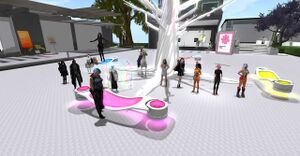Course:FNIS454/The Unwanted Labour of Social Media
| FNIS 454 Indigenous New Media | |
|---|---|

| |
| About this Resource | |
| This open access resource is developed by the students of FNIS 454: Indigenous New Media. Via summary and analysis of key article, this wiki explores the theoretical, cultural, socio-political, and gendered dynamics underwriting the histories and futures of Indigenous new media as it develops out of the late 90s and into the present moment. | |
| Index | |
| |
The Unwanted Labour of Social Media, summary by John Spears
The piece by Lisa Nakamura looks at the ongoing work that is done on social media to create a more inclusive, less toxic environment. This work, which includes calling out, educating, protesting against sexism, racism, homophobia etc., makes it possible for us all to enjoy and use digital spaces. However, this “unwanted labour” is almost exclusively shouldered by women of colour, queer and trans people, and other minorities. On the other side of the coin is white men and women who receive the free education about racism and sexism. All the while the owners of the social media outlets also benefit in this free unwanted labour and subsequently can boast on how progressive their sites are. The value of this labour is immense both socially, culturally, and economically and holds the power to “produce alternative dispositions, orientations, and social relations within capital, thereby transforming the nature of capital accumulation itself.”[1]
The unwanted labour of social media can be understood in a similar way with respect to colonialism and decolonization. A cornerstone of colonialism is that first there must be land for the colonizer to lay claim to. Subsequently, this land needs to be understood as being void of any previous claims or any pre-existing claims are deemed illegitimate. Upon these “un-ruled” lands, colonizers can exploit resources and cause harm to whomever they want, in particularly the Indigenous population. Social media, and more broadly cyberspace can be looked at in the same way. A frontier in which people can claim areas (i.e. websites, online communities etc.) and more-or-less have free range to say whatever they want and enact violence without fear of consequences. This is where the process of decolonization and unwanted labour intersect. Both of these processes work to dismantle notions that erase Indigenous presence and claim to space. They both also work to resist and fight against violence that is often perpetrated by straight, white, cis-males. Unwanted labour can be seen as a form of decolonization. Unwanted labour also runs in tandem with Indigenous new media.
This practice of unwanted labour is analogous with Indigenous new media in that they both strive to create new spaces of resurgence and community. They attempt to restructure digital spaces in ways that no longer either allow and/or uphold white supremacy and misogyny. Indeed, both contributing to the ongoing struggle of decolonization. Moreover, what both of these do, by decolonizing cyberspace, is to create spaces where the labour of decolonization does not have to be shouldered by the few. Digital labour, broadly taken up, has the potential to reimagine digital engagement as a collective responsibility and therefore hopefully lessen the burden put onto women of colour, queer people, Indigenous people and other marginalized peoples.
- ↑ Nakamara, Lisa (2015). "The Unwanted Labour of Social Media: Women of Colour Call out Culture As Venture Community Management". new formations: a journal of culture/theory/politics. 86: 106–12.
